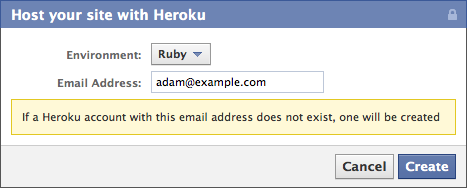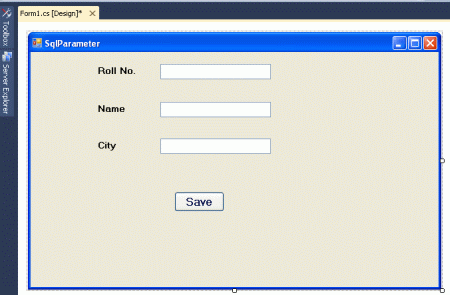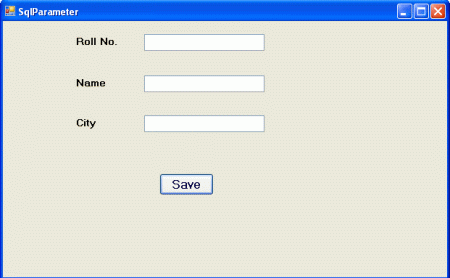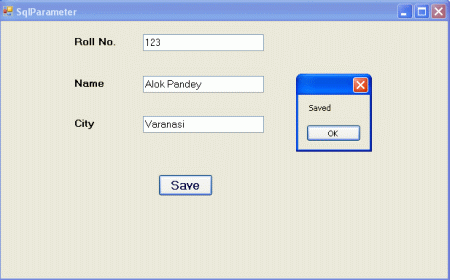Osho on Aloneness and Loneliness
- The aloneness is total and complete. Not
loneliness but aloneness. Loneliness is always concerned with
others; aloneness is concerned with oneself.
- Aloneness is the joy of being just
yourself. It is being joyous with yourself, it is enjoying your own
company. There are very few people who enjoy their own company. And
it is a very strange world: nobody enjoys his company and everybody
wants others to enjoy his company! If they don't enjoy he feels
insulted -- and alone he feels disgusted with himself. In fact, if
YOU cannot enjoy your own company, who else is going to enjoy it?
- Aloneness, solitude is positive. It is
overflowing joy for no reason. It is our very nature to be joyous;
hence there is no need to depend on anybody else. There is no other
motive in it, it is simply there. Just as the water flows downwards,
your being rises upwards. Just give it a chance -- give it solitude.
And remember again, solitude is not solitariness, just as aloneness
is not loneliness.
- Only a no-thought is pure, because then
you are utterly yourself, alone, nothing interfering. Jean-Paul
Sartre says: The other is hell. And he is right in a way, because
whenever you are thinking of the other you are in hell. And all
thoughts are addressed to others. When you are in a state of
no-thought you are alone, and aloneness is purity. And in that
aloneness happens all that is worth happening.
- Your aloneness is your essential being.
- Meditation is total freedom, aloneness,
the flight of the alone to the alone. There is no other, so there is
no question of drowning yourself, but one hundred percent
mindfulness will be needed -- less than that won't do.
- Meditation means being ecstatic in your
aloneness. But when you become ecstatic in your aloneness, soon the
ecstasy is so much that you cannot contain it. It starts overflowing
you. And when it starts overflowing you it becomes love. Meditation
allows love to happen. And the people who have not known meditation
will never know love. They may pretend that they love but they
cannot. They will only pretend -- because they don't have anything
to give, they are not overflowing.
- You can be alone, but that aloneness may
not be true aloneness. It may be only loneliness, and you may be
thinking and fantasizing about all kinds of things. Aloneness comes
out of awareness; it has nothing to do with where you are in the
outside world but where you are in the INSIDE world.
- Through aloneness, the ego is shattered.
It has nothing to relate to, so it cannot exist. So if you are ready
to be alone, unwaveringly alone, neither escaping nor falling back,
just accepting the fact of aloneness as it is -- it becomes a great
opportunity. Then you are just like a seed that has much potential
in it. But remember, the seed must destroy itself for the plant to
grow. Ego is a seed, a potentiality. If it is shattered, the divine
is born. The divine is neither "I" nor "thou," it is one. Through
aloneness, you come to this oneness.
- Consciousness has come to the point now
where you know that you are alone. And only in aloneness can you
attain enlightenment. I am not saying loneliness. The feeling of
loneliness is the feeling that comes when one is escaping from
aloneness, when one is not ready to accept it. If you do not accept
the fact of aloneness, then you will feel lonely. Then you will find
some crowd or some means of intoxication in which to forget
yourself.
- The first thing we must do is to accept
aloneness as a basic fact and learn to live with it. We must not
create any fictions. If you create fictions you will never be able
to know the truth. Fictions are projected, created, cultivated
truths that prevent you from knowing what is. Live with the fact of
your aloneness. If you can live with this fact, if there is no
fiction between you and this fact, then the truth will be revealed
to you. Every fact, if looked into deeply, reveals the truth.
- If you become aware of your aloneness,
then you become aware of the aloneness of others also. Then you know
that to try to possess another is trespassing.
- You must make a distinction between two
words: lonely and alone. In the dictionary they carry the same
meaning, but those who have been meditating, they know the
distinction. They are not the same, they are as different as
possible. Loneliness is an ugly thing; loneliness is a depressive
thing -- it is a sadness; it is an absence of the other. Loneliness
is the absence of the other -- you would like the other to be there,
but the other is not, and you feel that and you miss them. YOU are
not there in loneliness, the absence of the other is there. Alone?
-- it is totally different. YOU are there, it is your presence; it
is a positive phenomenon. You don't miss the other, you meet
yourself.
Then you are alone, alone like a peak, tremendously beautiful! Sometimes you even feel a terror -- but it has a beauty. But the presence is the basic thing: you are present to yourself. You are not lonely, you are with yourself. Alone, you are not lonely, you are with yourself. Lonely, you are simply lonely -- there is no one. You are not with yourself and you are missing the other. Loneliness is negative, an absence; aloneness is positive, a presence.
If you are alone, you grow, because there is space to grow -- nobody else to hamper, nobody else to obstruct, nobody else to create more complex problems. Alone you grow, and as much as you want to grow you can grow because there is no limit, and you are happy being with yourself, and a bliss arises. There is no comparison: because the other is not there you are neither beautiful nor ugly, neither rich nor poor, neither this nor that, neither white nor black, neither man nor woman. Alone, how can you be a woman or a man? Lonely, you are a woman or a man, because the other is missing. Alone, you are no one, empty, empty of the other completely.
And remember, when the other is not, the ego cannot exist: it exists with the other. Either present or absent, the other is needed for ego. To feel 'I' the other is needed, a boundary of the other. Fenced from the neighbors I feel 'I'. When there is no neighbor, no fencing, how can you feel 'I'? You will be there, but without any ego. The ego is a relationship, it exists only in relationship.
- First move from things to thoughts, then
from thoughts to the thinker. Things are the world of science,
thought is the world of art and the thinker is the world of
religion. Just go on moving inwards. The first circumference around
you is of things, the second of thoughts, and the third, the centre,
your very being, is nothing but consciousness. It is nothing but a
witnessing. Drop things and go into thoughts; then one day thoughts
also have to be dropped and then you are left alone in your purity,
then you are left absolutely alone. In that aloneness is God, in
that aloneness is liberation, moksha, in that aloneness is nirvana,
in that aloneness for the first time you are in the real.
- Ordinarily a man is alone, a woman is
alone. Loneliness is there. Even if you are attached to a man or
woman or a friend, and it is only the attachment of lust, you will
remain lonely. Have you not watched it? Attached to a woman,
attached to a man, but still you remain lonely. Somewhere deep down
there is no communication with the other; you are cut off, like
islands. Even dialogue seems to be impossible. Lovers ordinarily
never talk to each other, because each talk creates argument, and
each talk brings conflict. By and by, they learn to be silent; by
and by, they learn somehow to avoid the other, or at the most,
tolerate. But they remain lonely. Even if the other is there, there
is space; the inner space remains unfulfilled.
- On the path of meditation, aloneness is
sought, desired, hoped for, prayed for. Be alone. So much so that
not even in your consciousness does any shadow of the other move. On
the path of love, get so dissolved that only the other becomes real
and you become a shadow and by and by you completely disappear. On
the path of love, God remains, you disappear; on the path of
meditation, God disappears, you appear. But the total and the
ultimate result is the same. A great synthesis happens.
- In fact, mountain/valley are one thing, so
are love and meditation, so are relationship and aloneness. The
mountain of aloneness rises only in the valleys of relationship. In
fact, you can enjoy aloneness only if you can enjoy relationship. It
is relationship that creates the need for aloneness, it is a rhythm.
- Aloneness makes you overfull. Love
receives your gifts. Love empties you so that you can become full
again. Whenever you are emptied by love, aloneness is there to
nourish you, to integrate you. And this is a rhythm.
- I have always been alone on my path. Even
today I am absolutely alone. Your being here does not make any
difference -- my aloneness remains untouched -- because aloneness is
so intrinsic. Nobody can enter into your aloneness. You can be in
the crowd and absolutely alone, but you may be alone and not alone
at all. You can sit in a cave in the Himalayas and still think of
the crowd, of the girlfriend and the boyfriend and the marketplace
and what is going on there....
- Aloneness is also one of the fundamental
experiences as you enter silence.
In silence there is nobody else, you are simply alone.
The deeper your silence will be, thoughts will be gone, emotions
will be gone, sentiments will be gone -- just pure being, a flame of
light, burning alone.
One can get scared because we are so much accustomed to living with
people -- in the crowd, in the marketplace, in all kinds of
relationships.
You may not be aware that in all these relationships -- with
friends, with your husbands, with your wives, with your children,
with your parents -- you are basically trying to avoid the
experience of aloneness. These are strategies so that you are always
with somebody.
It is a well-known fact, psychologically established, that if a person is left alone in isolation, after seven days he starts talking... a little like whispering. For seven days he keeps talking inside, keeps himself engaged in the mind, but then it becomes too much -- things start coming out of his mind through his mouth and he starts whispering. After fourteen days you can hear him clearly, what he is saying. After twenty-one days he does not bother about anybody, he has gone insane; now he is talking to walls, to pillars, "Hello friend, how are you?" -- to a pillar, hugging a pillar! And this is true not about somebody special, it is true about everybody. He is trying to find some relationship. If he cannot find it in reality, he will create a hallucination.
You will see: just stand by the side of the road and watch people going from the office to the house, and you will be surprised. They are alone -- although there is a crowd all around -- but they are talking to themselves. They are making gestures, they are telling somebody something... because the crowd around them is not related to them. They are alone in the crowd, so they are trying to create their own illusion. Maybe they are talking to their wife, to their boss -- there are many things which cannot be said but right now they can say them. In front of the wife they cannot say it, but in this crowd, where everybody is engaged in his own thing, everybody is doing his own thing, they can say things to the wife. Nobody is listening, and at least one thing is certain -- the wife is not there! But they need the wife, they need someone to talk to. And after thirty days of isolation, a dramatic change happens: it is not only one- sided; it is not only that they are talking to the pillar, the pillar also starts talking to them! They do both things: first, "Hello, how are you?" and then, "I am good. I am fine, doing well." They answer from the side of the pillar too -- in a different voice. Now they have created a world of their own, they are no longer alone. No madman is alone. Either you are mad or not. If you don't know aloneness, there is something of madness in you.
Only pure aloneness gives you a clean sanity. You don't need the other; the dependence on the other is no more there, you are enough unto yourself. Language is meaningless because language is a medium to relate with the other. The moment you are no longer dependent on the other, language is meaningless, words are meaningless. In your silence -- when there are no words, no language, nobody else is present -- you are getting in tune with existence. This serenity, this silence, this aloneness will bring you immense rewards. It will allow you to grow to your full potential. For the first time you will be an individual, for the first time you will have the touch and the taste of freedom, and for the first time the immensity, the unboundedness of existence will be yours with all its blissfulness.
So whatever happens in silence -- either sadness or aloneness -- remember, in silence nothing wrong can ever happen. Whatever happens is going to enhance the beauty of it, deepen the charm of it; anything that happens will bring more and more flowers, more and more fragrance to it.
- Loneliness is a negative state of mind. Aloneness is positive, notwithstanding what the dictionaries say. In dictionaries, loneliness and aloneness are synonymous -- they are synonyms; in life they are not. Loneliness is a state of mind when you are constantly missing the other, aloneness is the state of mind when you are constantly delighted in yourself. Loneliness is miserable, aloneness is blissful. Loneliness is always worried, missing something, hankering for something, desiring for something; aloneness is a deep fulfillment, not going out, tremendously content, happy, celebrating. In loneliness you are off center, in aloneness you are centered and rooted. Aloneness is beautiful. It has an elegance around it, a grace, a climate of tremendous satisfaction. Loneliness is; beggarly; all around it there is begging and nothing else. It has no grace around it. In fact it is ugly. Loneliness is a dependence, aloneness is SHEER independence. One feels as if one is one's whole world, one's whole existence.









